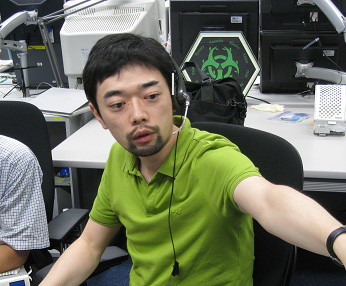This is an archive of information released in the past.
Disclaimer: It may contain broken links or outdated information. Some parts may not function in current web browsers.
*Visit https://humans-in-space.jaxa.jp/en/ for the latest information.

Experiment
- News
- Kibo Utilization Strategy
- Kibo Utilization Plan
- List of JAXA's Utilization Themes
- Experiment Facilities
- Space Environment Utilization
- Archive
2D-Nano Template Began on board Kibo
* All times are Japan Standard Time (JST)
Production of Two Dimensional NanoTemplate in Microgravity (2D-NanoTemplate) began.
The 2D-NanoTemplate experiment tries to create a nano-scale two-dimensional pattern (mask pattern) on a plate (substrate) in space by arranging a peptide-PEG* array on the substrate. After the experiment, the substrate will be returned to the ground, and the mask pattern on the substrate will be chemically fixated for making a 2D nano template. The mask pattern can be imprinted to a substrate made of electronics material to produce semi-conductor elements.
*Peptides consist of amino arrays of amino acids. PEG is a polymer compound called polyethylene glycol.
There is a trend toward miniaturization and functionalization in the semiconductor industry. The technique demonstrated in space can be applied to the production of high performance semiconductor elements.
Experiment sample was launched to the International Space Station (ISS) aboard the space shuttle Discovery (STS-131 mission), on which JAXA Astronaut Yamazaki flew, on April 5, 2010. Aboard the ISS, the sample was stored in the station's refrigerator/freezer, MELFI.
A stopper between the peptide-PEG solution and the substrate was removed by ISS crew, and the experiment began at 7:43 p.m. on July 9, 2010. The experiment is scheduled to continue over the next three months, and the substrate will be returned to the ground aboard the next shuttle flight.
On the ground, rate of the peptide-PEG transportation to the substrate is so fast that the peptide-PEG will form random arrays on the substrate. The peptide-PEG will also tie each other before they reach the substrate, will drop on the substrate and form random arrays.
In microgravity condition, the peptide-PEG slowly forms arrays on the surface of the substrate (diffusion only). Therefore, the array is neatly formed on the substrate.
Semiconductor elements are used for electronics components of various products, such as computers and cell phones. 2D nano template will be a base to produce such semiconductor elements.
It is expected that the nano template produced in space will tend to have higher quality. The semiconductor material made of the space-produced nano template should have higher quality and performance. Therefore, the experiment will lead to development of high performance computers, and cost reduction in manufacturing, which uses semiconductor elements.
Message from Experiment Team Member (Masayoshi Tanaka, Assosiate Professor, Nagoya Institute of Technology)
This was the first space experiment for our team. I would like to extend our gratitude to JAXA and all those who have assisted preparation of the experiment.
Our polymer compound, which we are usually handling in our laboratory, is flying aboard the ISS. I am very interested in knowing the characteristics of the polymer compound in space. The project will give a positive impact for industry. We will continue the experiment with great anticipation.

Associate Professor Tanaka monitoring the experiment from the UOA at TKSC
*All times are Japan Standard Time (JST)
| Copyright 2007 Japan Aerospace Exploration Agency | Site Policy |